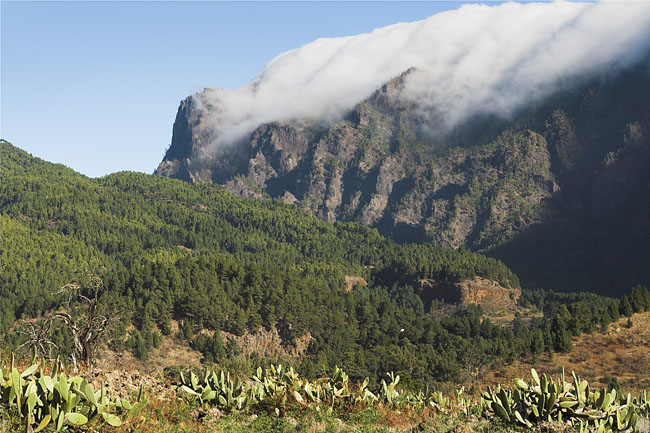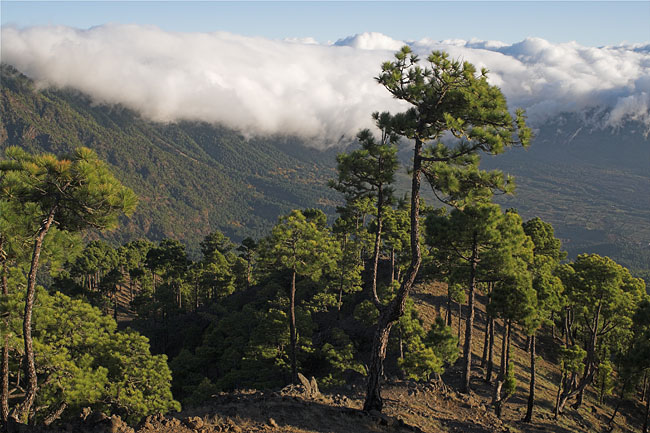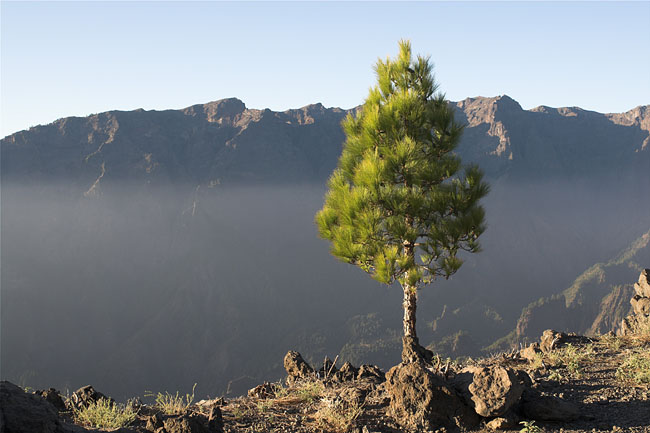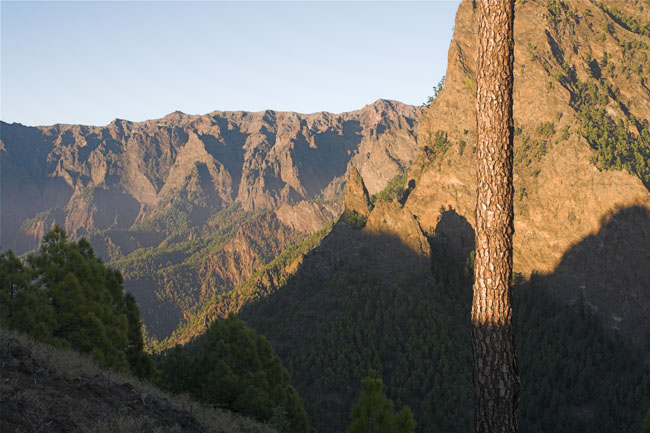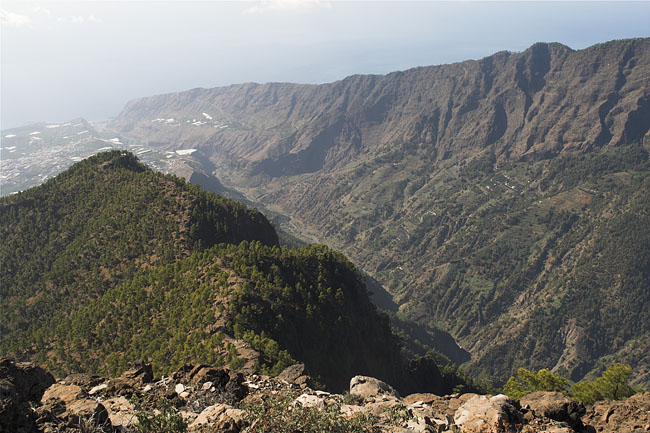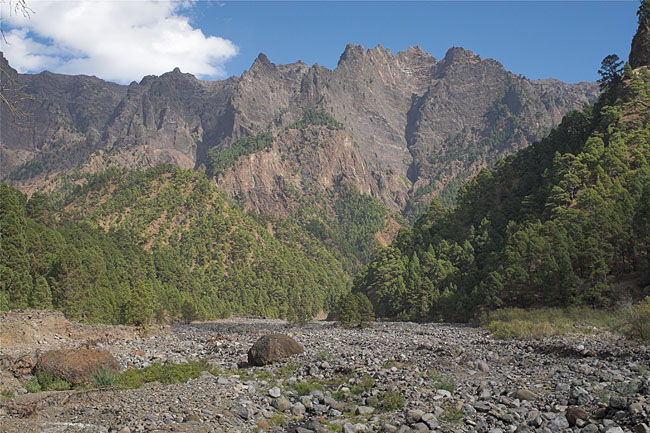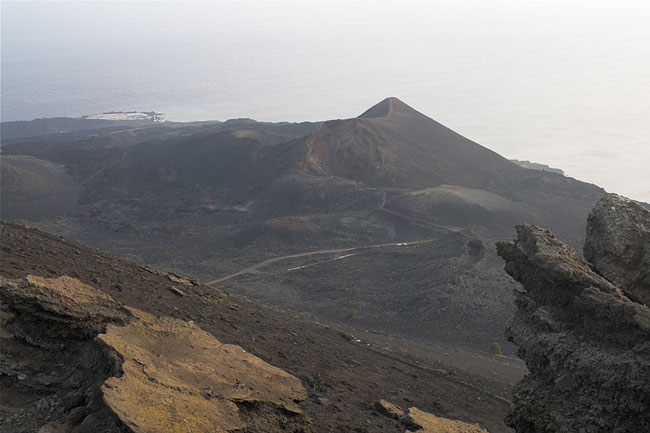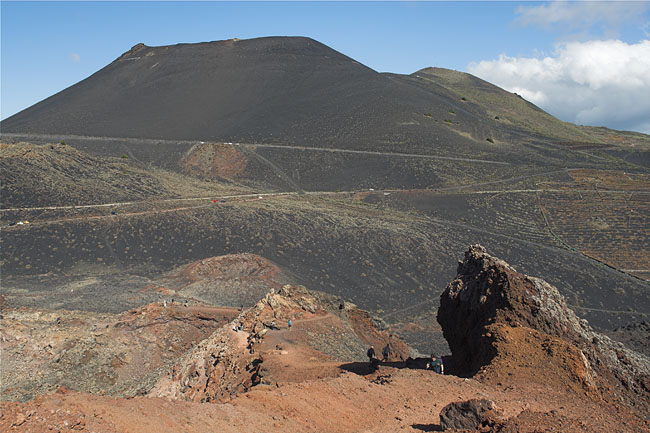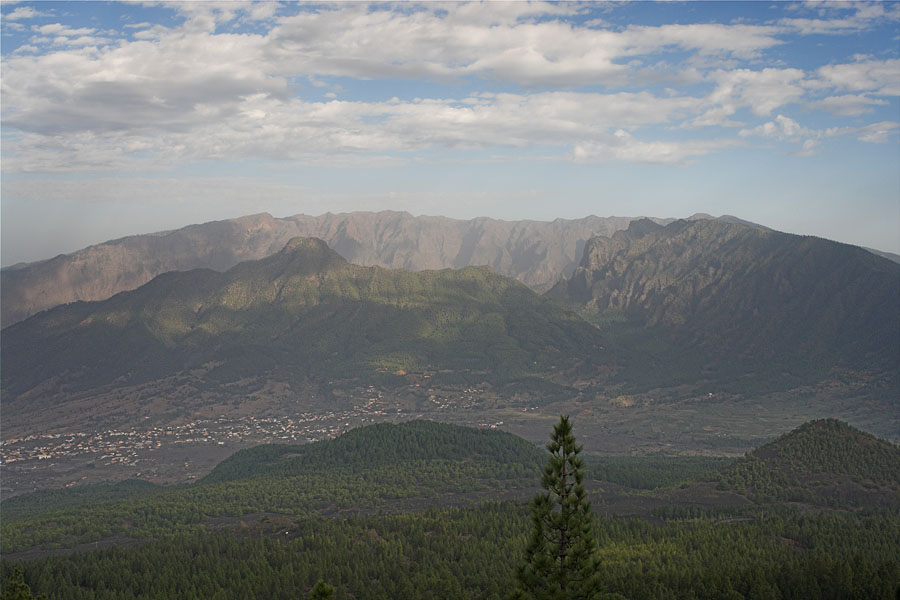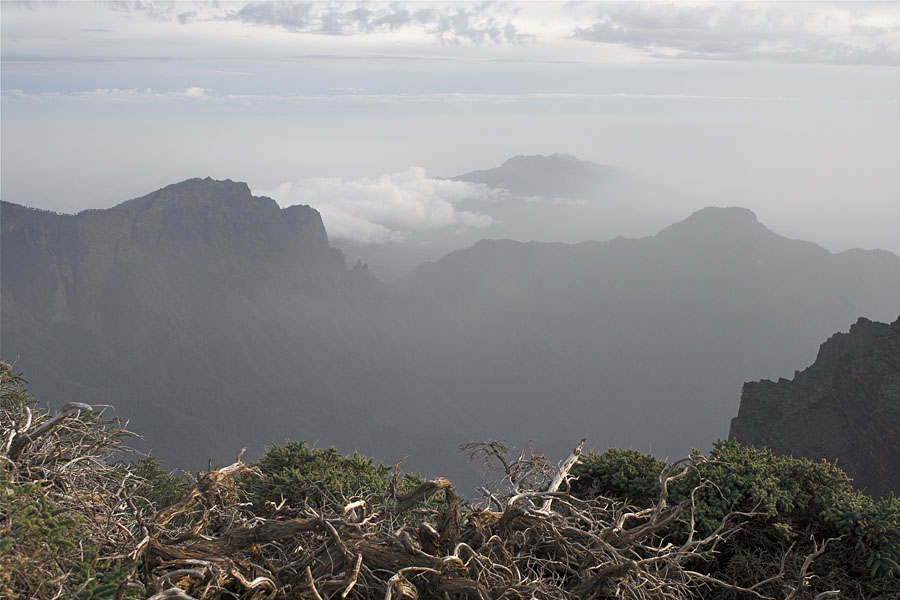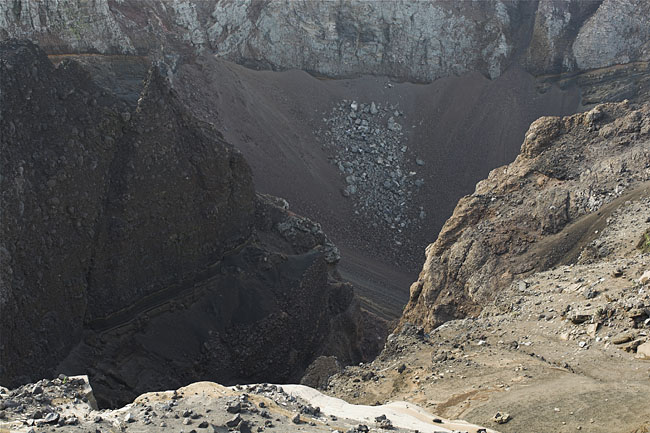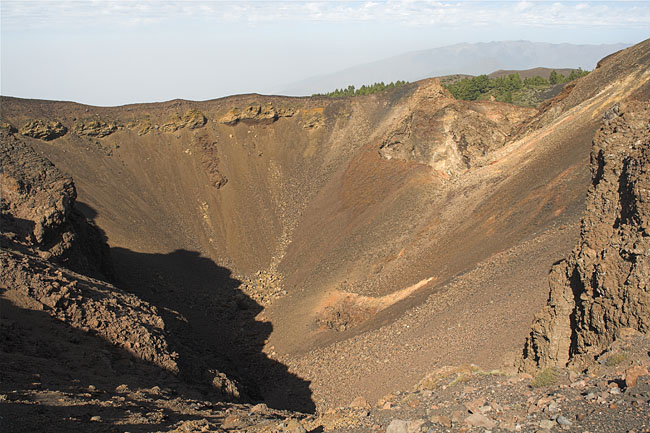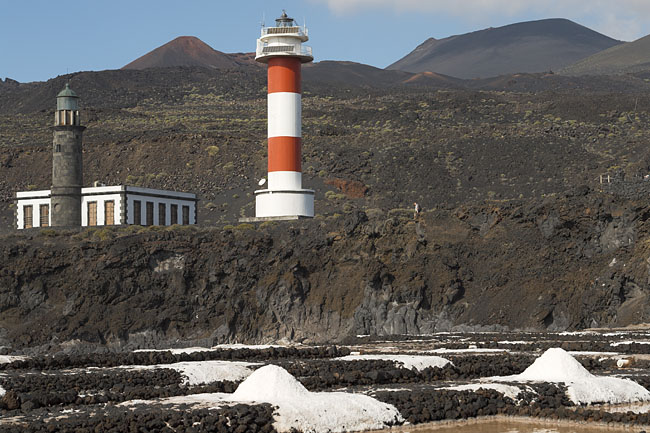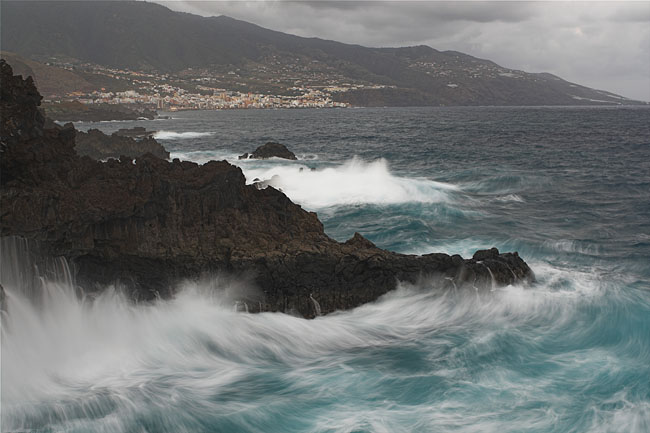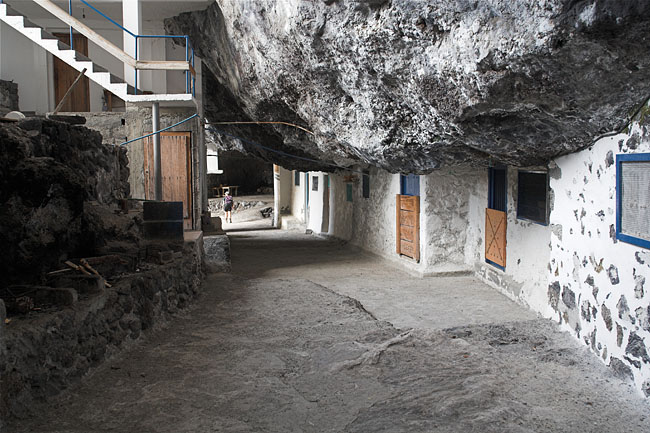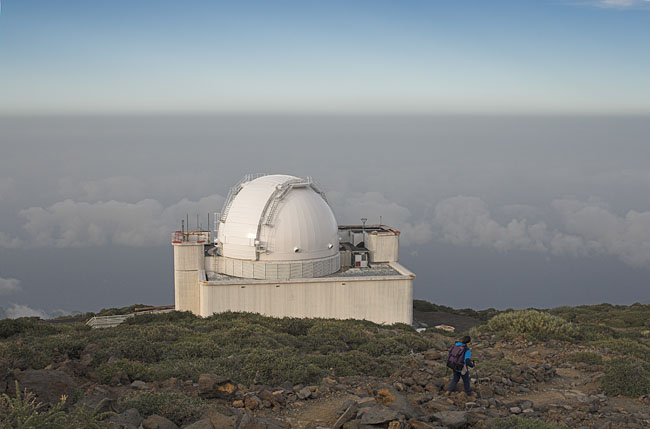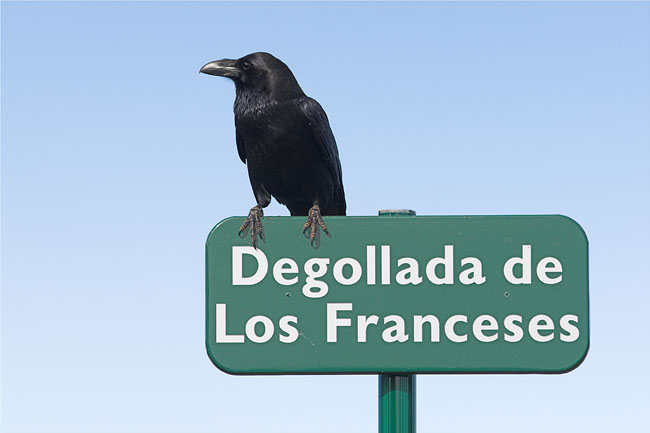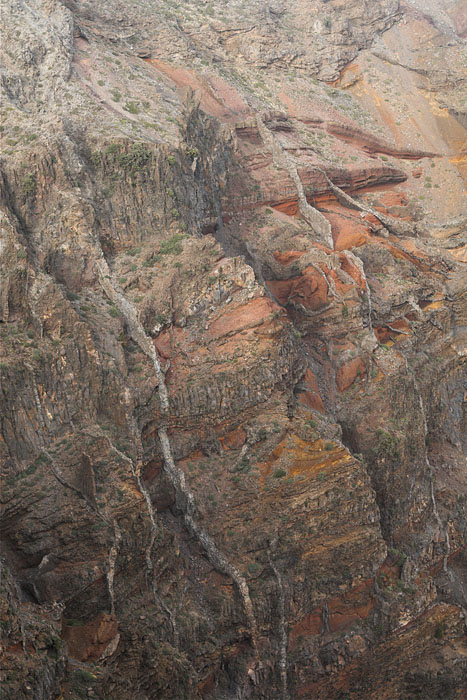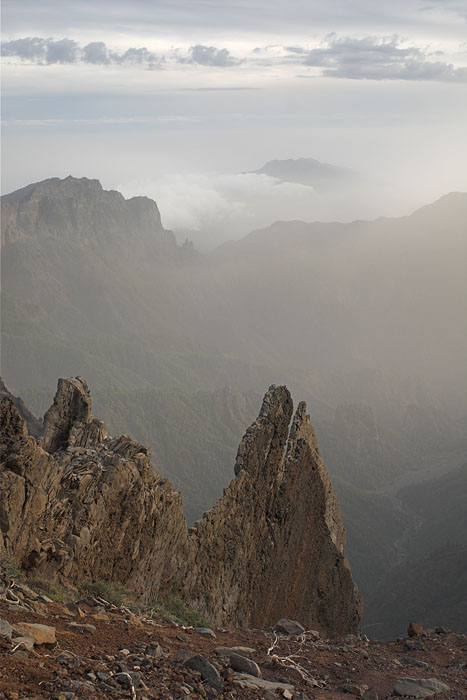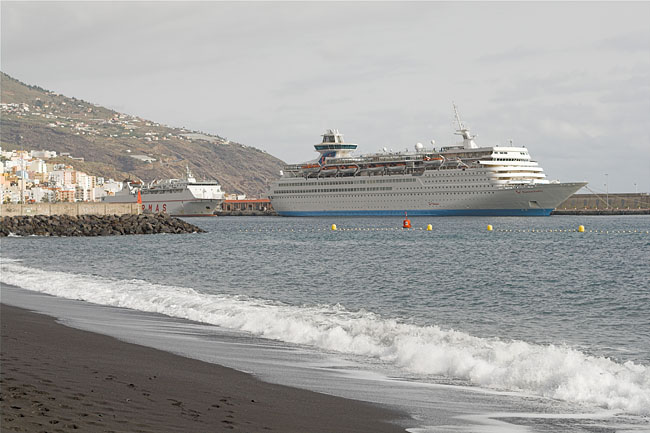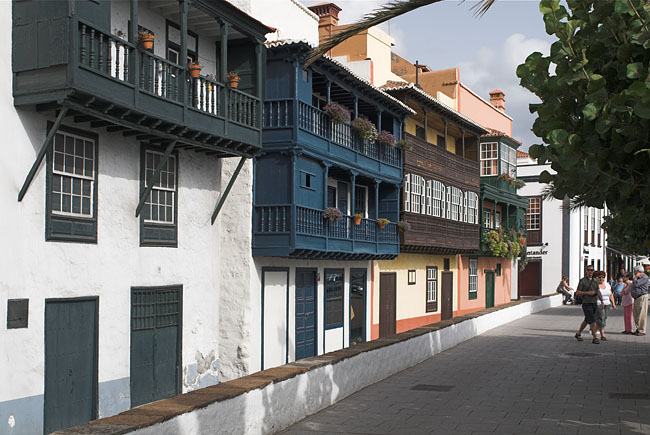Blue SkyThe picture is betraying, the good weather only present on the western half of La Palma. This is a common situation for Passat winds, when the rising air forms clouds on the eastern slopes, which dissolve as soon as they have crossed the highest point. Even here, at the National Park's visitor center, some raindrops still hit our faces, carried along by the fresh wind. |
PassatThe same Passat-clouds from a higher point of view, from a point below the Pico de los Cuevos. There are plenty of possibilities to hike under a deep blue sky on a day like this, there is absolutely no need to walk the Cumbre Vieja in endless rain, sharp winds, and no visibility at all.
|
